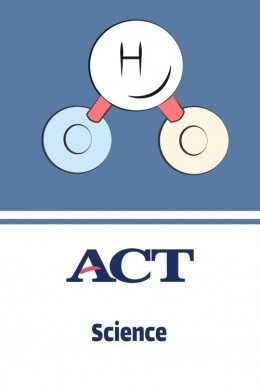Természettudományok ACT - Zoology
Itt megtanulhatsz néhány angol szót, amelyek a zoológiához kapcsolódnak, például "lárva", "karmos", "párosujjú" stb., amelyek segítenek majd a sikeres ACT-eredmény elérésében.
Áttekintés
Villámkártyák
Betűzés
Kvíz

to keep an egg in a favorable condition to help it develop until it hatches

inkubál, költ
(of birds, fish, etc.) to come out of an egg

kikel
the number of eggs or offspring produced by a single reproductive effort, typically by a bird, reptile, or insect

fészekalj mérete, tojások száma egy fészekaljon
(of an animal) lacking a spinal column or notochord

gerinctelen, gerincként nélküli
related to the sea and the different life forms that exist there

tengeri
a class of animals to which humans, cows, lions, etc. belong, have warm blood, fur or hair and typically produce milk to feed their young

emlős, emlősállat
any cold-blooded animal with the ability to live both on land and in water, such as toads, frogs, etc.

kétéltű, amphibian
any small mammal with a pair of strong front teeth, such as mice, hamsters, rats, etc.

rágcsáló, rágcsáló
any mammalian animal that belongs to the same group as humans, such as monkeys, apes, lemurs, etc.

prímát, majom
any animal in the cat family

macskaféle, macska
a class of animals to which crocodiles, lizards, etc. belong, characterized by having cold blood and scaly skin

hüllő, hidegvérű állat
a class of terrestrial arthropods that breathe air and have four pairs of limbs, such as spiders, scorpions, etc.

pókszabású
a hoofed mammal, typically herbivorous, which includes animals such as horses, cows, deer, and elephants

párosujjú, párosujjú patás
a type of moth belonging to the family Sphingidae, known for their rapid flight and ability to hover while feeding on nectar from flowers

pillangólepke, sphinx lepke
any long and cylindrical worm with a segmented body that is either parasitic or free-living

fonálféreg, kerekesférgek
a type of shellfish that can be eaten both raw and cooked, some of which contain pearls inside

osztriga, ehető osztriga
a sea creature with a hard shell and jointed legs such as crabs and lobsters

rákféle, rák
any mammal that lays eggs and is only found in Australia, such as platypus

kloákás emlős, tojó emlős
an invertebrate animal with a segmented body and a chitinous exoskeleton, such as a spider, crab, etc.

ízeltlábú, arthropoda
a black-and-white crow with a long tail that is noted for its intelligence

szarka, európai szarka
a large grasshopper that lives in hot countries and flies in large swarms, destroying crops

sáska, tücsök
a marine arthropod with an external shell that attaches itself to a surface and feeds on particles that are in the water

kagylósrák, barnacle
a type of monkey that belongs to the Old World monkey family, characterized by their long tails, cheek pouches

makákó
a member of the biological family Hominidae, which includes humans, their ancestors, and other great apes like chimpanzees, gorillas, and orangutans

hominida, a Hominidae család tagja
a small egg-laying mammal that is covered in spines, has a pointed snout and originates from Australia

sünpatkány, echidna
a semiaquatic rodent with a wide tail and strong teeth that builds dams across streams and is mainly found in the Northern hemisphere

hód, kastor
of or relating to monkeys or apes

majomszerű, majom-
a large, black-and-white marine mammal known for its social behavior, intelligence, and adaptability, found in oceans worldwide and known as an apex predator

kardszárnyú delfin, gyilkos bálna
any invertebrate that lives in aquatic or damp habitats and has a soft unsegmented body, often covered with a shell

puhatestű, kagyló
a member of the dog family, including domestic dogs, wolves, foxes, and related animals

kutya, kutyaféle
a small, short-tailed, ground-dwelling game bird with brownish plumage

fürj, közönséges fürj
a small marine animal that is covered with spines and has a round shell, harvested for food

tengeri sün, tüskés tengeriállat
a colorful bird species found in the Americas, known for its vibrant plumage, melodious songs, and important ecological role in seed dispersal

tangara, Amerika színes madara
a small mammal belonging to the weasel family with black and white stripes that can produce a strong unpleasant smell when attacked, native to North America

bűzösborz, skunk
an animal with sharp needle-like parts on its body and tail, used for protection

sül, tüskés állat
a sharp, stiff, hollow spine found on the body of porcupines or hedgehogs, serving as a defensive mechanism against predators

tüske, hátgerinc
a specialized caste of social insects, such as ants or termites, that are engorged with food and serve as living food storage units within the colony

replet, élő raktár
a large marine mammal known for its distinctive appearance, acrobatic behavior, and complex songs

púpos bálna, humpback bálna
a long, tubular feeding organ found in many insects, such as butterflies, moths, and flies, which is used to suck up nectar, other liquids, or in some cases, blood

ormány, proboscis
the long and protruding facial part of an animal which comprises its nose and mouth, especially in a mammal

pofa, orr
the bivalve shell of a clam, characterized by two symmetrical halves that hinge together

kagylóhéj, kagylófedél
any external body part that protrudes from an organism's main body, often used to describe limbs, antennae, or other structures

függelék, végtag
any of the various flexible limbs of an animal, especially an invertebrate, which enable it to move or hold things

csáp, függelék
the posterior part of a fish or aquatic animal's body, composed of fins that provide propulsion and maneuverability

farokúszó, hal farok
the biological ability of certain organisms to perceive and orient themselves based on the Earth's magnetic field

magnetorecepció, mágneses érzékelés
the biological ability of certain animals to detect electrical fields in their environment to locate prey, navigate, and communicate

elektrorecepció, elektromos érzékelés
(of animals or birds) moving from one place to another, often with the changing seasons

vándorló, vándorló
to transform from the larval stage into a pupa during an insect's development

bábozódik, bábbá alakul
relating to or characteristic of the larva stage, which is an early, immature form of an animal that undergoes metamorphosis

lárvával kapcsolatos, lárvára jellemző
(of an animal) to have sex and give birth to young

szaporodik, szül
a biological process in which an animal undergoes a significant change in form and structure during its life cycle, typically seen in insects, amphibians, and other animals

metamorfózis, átváltozás
a scientist who specializes in the study of birds, including their behavior, ecology, and evolution

ornitológus
a scientist who studies reptiles and amphibians

herpetológus, a hüllők és kétéltűeket tanulmányozó tudós
a scientist who specializes in the study of insects, including their behavior, ecology, and classification

entomológus
| Természettudományok ACT |
|---|